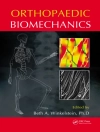Decision making is a critical element in the field of medicine that can lead to life-or-death outcomes, yet it is an element fraught with complex and conflicting variables, diagnostic and therapeutic uncertainties, patient preferences and values, and costs. Together, decisions made by physicians, patients, insurers, and policymakers determine the quality of health care, quality that depends inherently on counterbalancing risks and benefits and competing objectives such as maximizing life expectancy versus optimizing quality of life or quality of care versus economic realities.
Broadly speaking, concepts in medical decision making (MDM) may be divided into two major categories: prescriptive and descriptive. Work in the area of prescriptive MDM investigates how medical decisions should be done using complicated analyses and algorithms to determine cost-effectiveness measures, prediction methods, and so on. In contrast, descriptive MDM studies how decisions actually are made involving human judgment, biases, social influences, patient factors, and so on. The Encyclopedia of Medical Decision Making gives a gentle introduction to both categories, revealing how medical and healthcare decisions are actually made—and constrained—and how physician, healthcare management, and patient decision making can be improved to optimize health outcomes.
Key Features
- Discusses very general issues that span many aspects of MDM, including bioethics; health policy and economics; disaster simulation modeling; medical informatics; the psychology of decision making; shared and team medical decision making; social, moral, and religious factors; end-of-life decision making; assessing patient preference and patient adherence; and more
- Incorporates both quantity and quality of life in optimizing a medical decision
- Considers characteristics of the decisionmaker and how those characteristics influence their decisions
- Presents outcome measures to judge the quality or impact of a medical decision
- Examines some of the more commonly encountered biostatistical methods used in prescriptive decision making
- Provides utility assessment techniques that facilitate quantitative medical decision making
- Addresses the many different assumption perspectives the decision maker might choose from when trying to optimize a decision
- Offers mechanisms for defining MDM algorithms
With comprehensive and authoritative coverage by experts in the fields of medicine, decision science and cognitive psychology, and healthcare management, this two-volume Encyclopedia is a must-have resource for any academic library.
Yazar hakkında
Michael W. Kattan, Ph.D., is Chairman of the Department of Quantitative Health Sciences at Cleveland Clinic. He directs a department of 90 professionals who span the areas of biostatistics, epidemiology, health outcomes research and statistical genetics. Previously, he was Associate Attending Outcomes Research Scientist at Memorial Sloan-Kettering Cancer Center and Associate Professor of Biostatistics in Urology at Cornell University. Dr. Kattan has written more than 200 peer-reviewed publications, many explicity dealing with medical decision making, and he serves on the editorial boards of numerous journals, including Medical Decision Making.












